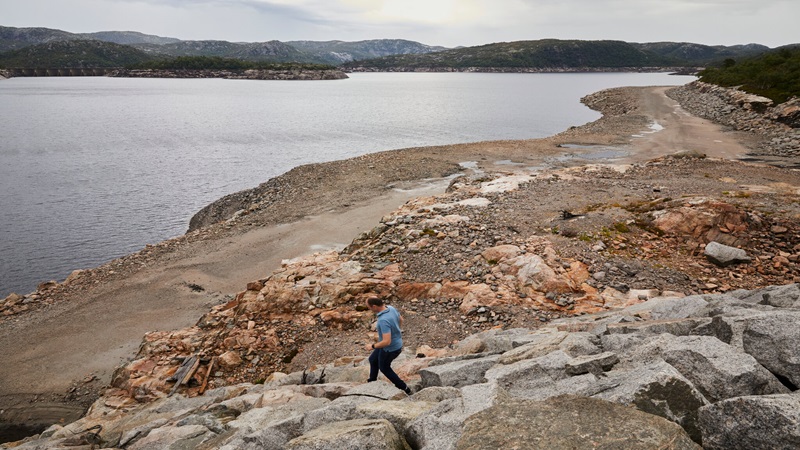
Arantzazu Esparza Zabalza
Danger of drastic reduction in water reservoirs in Southern Europe; heat waves and constant droughts
Most Read Stories Today
-
Water Scarcity and Artificial Rainfall: The Positive and The Negative Effects of Cloud Seeding, including Health Hazards and Climate Implications.
-
Renewable Energy in Rural Areas: Challenges, Opportunities, and Successful Rural Projects
-
Pakistan's Agriculture at Risk Due to Climate Variability
-
South Africa's Recent Floods: Is Climate Change to Blame?
-
South Korea's floods: root causes and prevention strategies.
-
South Africa: Cape Town, A City Under Fire
-
The Human Cost of Climate Disasters
-
Our Oceans, Our Future: The South African Dilemma of Overfishing
-
Degenerative Impact of Hydrocarbons On The Environment.
-
Sustainable Urban Planning - Copenhagen and the Path to Climate Resilience
In recent years, the consequences of climate change have led to the launch of measures aimed at reducing its effects on a day-to-day basis; as well as developing an enforced resilience to climate change for many inhabitants of different regions of the world.
This is the case of the Southern European region which in the past year(2022 to be precise) faced many heat waves that also recurred during the spring and summer of 2022, observed as the most severe and longest in recent decades.
According to the report prepared by the European Commission 'Drought in Europe' in July 2022, heat waves had increased both in duration and thermal severity as it is shown in the two images corresponding to 20th of May, 2022 (left image) and June 18th, 2022 (right image), in the spring of that year and with registered heat waves of more than ten days and temperatures well above the average forecast for that season.
Figure 1 Duration of heatwaves (extracted from European Commission report ‘Drought in Europe’, July 2022)
Moreover, focusing on Spain, the country accumulated 41 days of heat waves in the spring and summer of 2022, according to AEMET data (Spanish weather forecast agency). In the following figure, it is shown that the greatest recorded heat wave happened in July 2022, with 18 days of duration an overheat anomaly of 4.5 ºC, and with 44 regions affected out of 52 in the whole country.
Consequently, a significant drought has affected large European regions, especially Southern Europe, and the Mediterranean basin due to a combination of factors that have intensified in recent years: anomalously on a large-scale atmospheric conditions, precipitation reduction, soil moisture reduction, river flow decrease, and constant heat waves.
The European Commission uses an indicator called the Combined Drought Indicator (CDI) implemented in the European Drought Observatory (EDO) which is used to identify areas affected by agricultural drought and areas with the potential to be affected.
Reviewing the CDI, it is concluded from the report (and in accordance with the image below), that large regions of central and southern Europe and the Mediterranean basin are at drought alert levels associated with the soil moisture deficit or its combination with the vegetation stress.
The risk of droughts compared to former years has increased a lot in the Iberian Peninsula (referring to the study region of southern Europe) as well as in Italy, France, or the center of the continent (Germany, Hungary, and Romania).
Figure 2 Combined Drought Indicator CDI June 22 (extracted from the European Commission report 'Drought in Europe')
All this has had a severe consequences in terms of the drastic reduction of water reserves (in Spain in 2022 water reserves were reduced by 69% compared to the average of the previous 10 years) which has led to numerous devastating forest fires for the flora. On the other hand, water scarcity combined with heat waves has caused drastic reductions in both winter and summer crops and harvest.
Reviewing the case of Spain itself and according to the website www.embalses.net which monitor the situation of water reservoirs, the situation on February 27th in the country is the following:
- Complete water reserves - 28 356 hm3
- Complete Capacity - 56 069 hm3
- Same week average (10 years) - 34 344 hm3
Figure 3 Combined Drought Indicator CDI June 22 (extracted from the European Commission report 'Drought in Europe')
As mentioned above, these warning and worrying data may affect crop and harvest, hydropower generation capacity, and eventually human water consumption.
Finally, reflecting on the situation and the evolution of water reserves and the risk of droughts in southern Europe, it is concluded that heat waves are getting longer and registering higher temperatures. The risk of drought is growing and so is the lack of water, reduction of soil moisture, the impoverishment of crops and reduction of harvests, the increase in forest fires, and the reduction of hydroelectric power generation capacities.
References
- www.embalses.net
- www.aemet.es
- https://edo.jrc.ec.europa.eu/documents/news/GDO-EDODroughtNews202207_Europe.pdf
- -Edited by: Muhammad Abdullahi Ibrahim

Terms & Conditions
Subscribe
Report
My comments